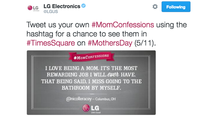Hashtags in social media started as a way to make it easier for people to “gather” and have discussions on Twitter.
They eventually became
pervasive in social media among consumers. They started using them across most social platforms, as both punctuation (#sorrynotsorry) and to live tweet about an event/topic (#Oscars). As a result,
brands jumped on the trend and started adding hashtags to their posts and advertising. You might remember the first hashtagged TV spot from Audi on the Super Bowl in 2011:

With this explosion of hashtag
usage, digital and social strategists now get asked this question almost daily: “What’s the hashtag?” When we answer that question with, “We don’t need one,”
colleagues and clients seem affronted, as if we’re betraying our job title. Their “gasp” is usually followed by one of the following questions:
“But how will the campaign be social…?”
Let me be clear, hashtags don’t make things social. Engaging content and
experiences that make people want to share, make things social.
“But how will we track the campaign performance….?”
There are many tools and methods to track campaign performance that don’t require a hashtag. The customer experience should never be sacrificed for an easier way to track how
many people talked about a campaign.
“But how will the consumer know it’s part of the campaign…?”
Three
words for you. They. Don’t. Care. According to a survey conducted by Origin, only 54% of people even know what a hashtag is. Among that
group, only 34% ever remember seeing a hashtag related to a brand and only 12% have actually used a hashtag to talk about a brand’s advertising campaign.
“But how will everything connect…?”
Saying you need a branded hashtag on all of your campaign content is like saying you
need to have a tagline in every single social post. Sound like overkill? That’s because it is. Make things connect by developing a strong consumer experience and media targeting strategy, that
easily leads people from one medium or message to the next.
To be clear, I’m not 100% anti-hashtag. I’m just anti-hashtag much of the time
because of how brands are using them. Below are three situations in which a hashtag makes sense for a brand:
1. When you are using the hashtag as punctuation to your
content, just like people do. Commonly used hashtags, such as #sorrynotsorry, are often used as a “wink” at the end of a post. Brands can use this technique to speak the way their
consumers do, which can make them appear more relatable.
2. When you are trying to connect with a particular group of people who already use a specific hashtag. In
that case, leveraging the hashtag in your work allows you to tap directly into an existing conversation.
For example, Hill Holliday worked with LG Home Appliances to
develop a campaign called #MomConfessions, that tapped into an existing behavior on Twitter among our target. As a result, we were able to use “consumer speak” instead of “brand
speak” to connect with our audience.

3. When you’re willing to reward people for their use of the hashtag. Hashtags are a useful trigger for entry into a contest that’s both trackable and in line
with legal guidelines related to contests.
To the digital strategists out there, the next time you are asked, “What’s the hashtag?” I urge you to push
back and ask your colleagues, “Why do we need one?”